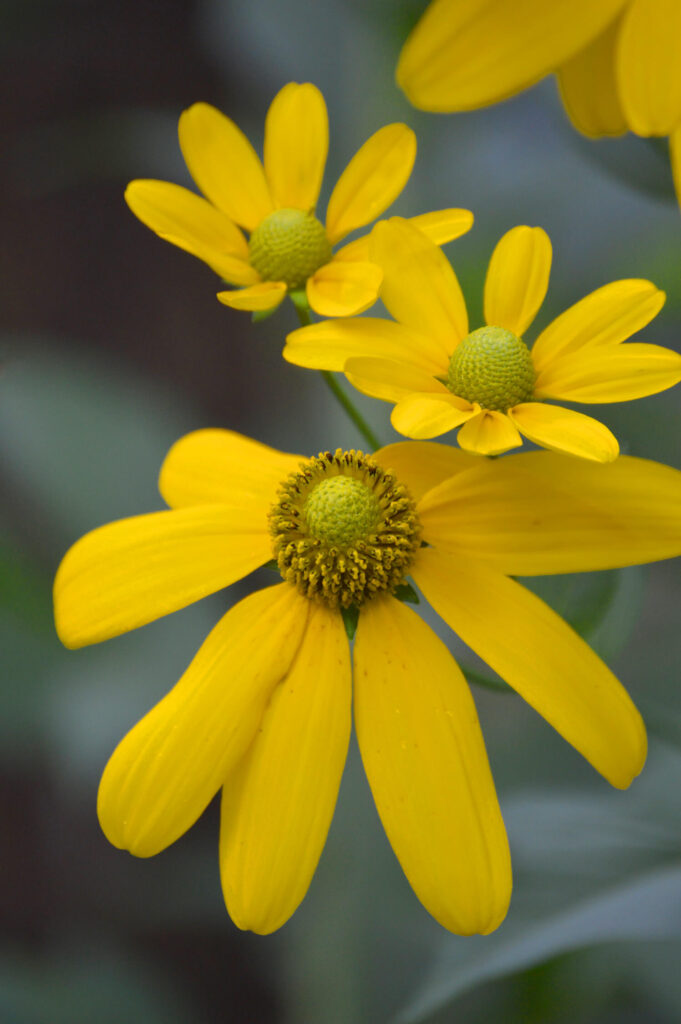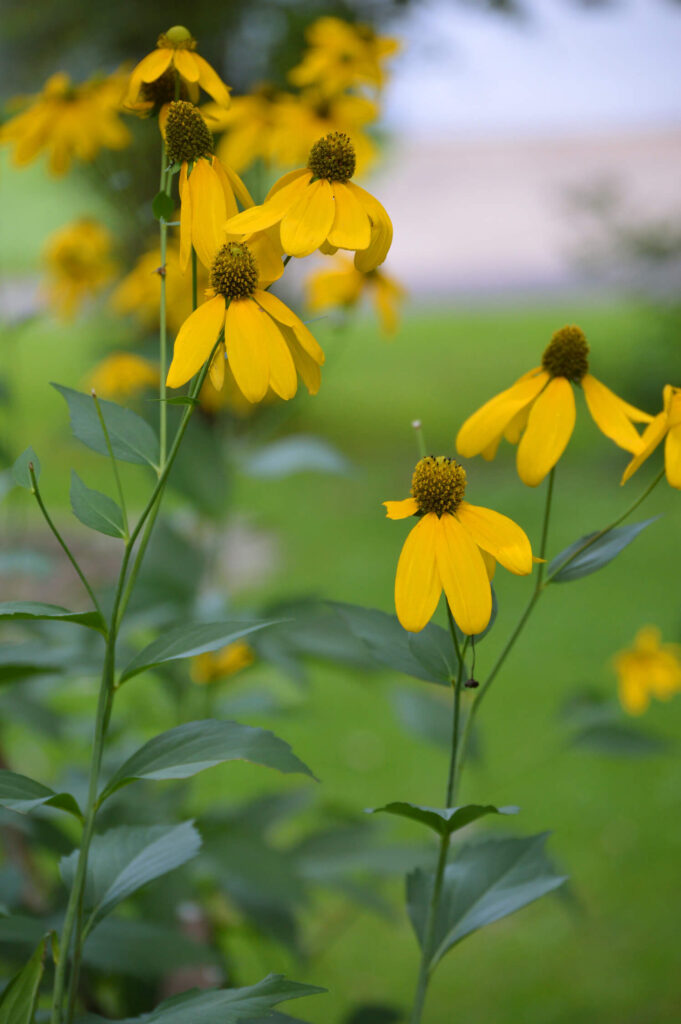Native to North America, this tall flowering perennial in the Asteraceae family makes a statement in my garden. Not only is it a prolific bloomer, but it also attracts all sorts of insects – bees, butterflies, and other insects.

With a height of almost 6 feet, it towers around the base of the sycamore that I have it planted around. The leaves of this plant are highly lobed, making it look like the leaf has been “torn” – hence the source of the common name cut-leaf.
Flowers
The flowers are large, about 3-4 inches wide, and have a lightly green-yellow center with bright yellow petals, leading to another common name for this plant – “green-headed coneflower.”
This Rudbeckia blooms during the summer months from July to October. Deadheading can increase the amount of blooms that you get, but isn’t necessary. I never mess with mine and they produce a lot of flowers, plus the birds will eat the seeds.
The tall flower spikes stand up pretty well to storms and wind, but occasionally you may need to stake them.
How to Grow Cutleaf Coneflower
Plant in full sun to part shade in soil that is moist but has good drainage. While cut-leaf coneflower will tolerate the high heat of summer, it doesn’t do very well in drought conditions. It prefers regular water. It can tolerate wet soils. Good for USDA hardiness zones 3 to 9.
After the first year, cutleaf coneflower will spread. I have heard that in some people’s gardens it spreads rampantly. In mine, it hasn’t overtaken anything, but it might be a result of where it has been planted. You can divide the plants at the roots to share with friends and to help keep it under control.
Wildlife Uses
Pollinators love the flowers of this plant- butterflies, bees, wasps, and flies can be found on it. You can see several small bees and a wasp feeding on the flowers this June in the video below.
This is a host plant for the caterpillar of the wavy-lined emerald moth.
In the winter, birds will feed on the seedheads, so be sure to leave them on the plant. American goldfinches are particularly fond of the seeds. This plant is deer-resistant.

